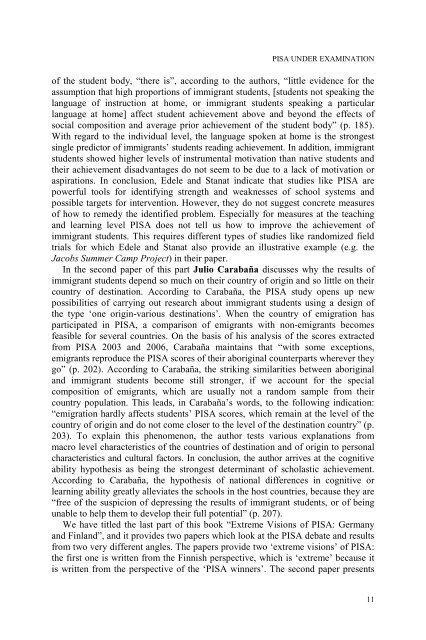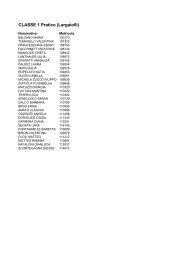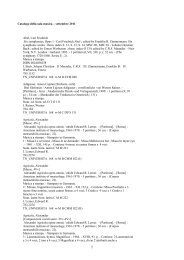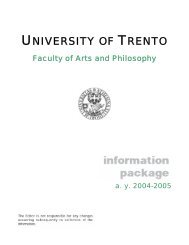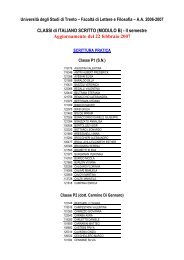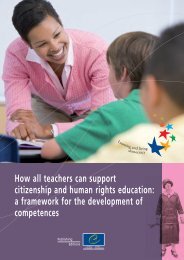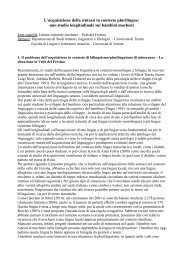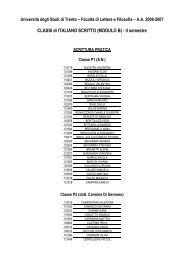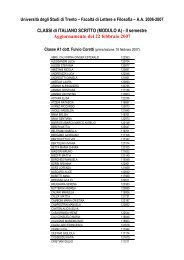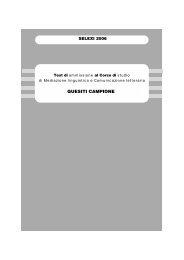PISA Under Examination - Comparative Education Society in ...
PISA Under Examination - Comparative Education Society in ...
PISA Under Examination - Comparative Education Society in ...
You also want an ePaper? Increase the reach of your titles
YUMPU automatically turns print PDFs into web optimized ePapers that Google loves.
<strong>PISA</strong> UNDER EXAMINATION<br />
of the student body, “there is”, accord<strong>in</strong>g to the authors, “little evidence for the<br />
assumption that high proportions of immigrant students, [students not speak<strong>in</strong>g the<br />
language of <strong>in</strong>struction at home, or immigrant students speak<strong>in</strong>g a particular<br />
language at home] affect student achievement above and beyond the effects of<br />
social composition and average prior achievement of the student body” (p. 185).<br />
With regard to the <strong>in</strong>dividual level, the language spoken at home is the strongest<br />
s<strong>in</strong>gle predictor of immigrants’ students read<strong>in</strong>g achievement. In addition, immigrant<br />
students showed higher levels of <strong>in</strong>strumental motivation than native students and<br />
their achievement disadvantages do not seem to be due to a lack of motivation or<br />
aspirations. In conclusion, Edele and Stanat <strong>in</strong>dicate that studies like <strong>PISA</strong> are<br />
powerful tools for identify<strong>in</strong>g strength and weaknesses of school systems and<br />
possible targets for <strong>in</strong>tervention. However, they do not suggest concrete measures<br />
of how to remedy the identified problem. Especially for measures at the teach<strong>in</strong>g<br />
and learn<strong>in</strong>g level <strong>PISA</strong> does not tell us how to improve the achievement of<br />
immigrant students. This requires different types of studies like randomized field<br />
trials for which Edele and Stanat also provide an illustrative example (e.g. the<br />
Jacobs Summer Camp Project) <strong>in</strong> their paper.<br />
In the second paper of this part Julio Carabaña discusses why the results of<br />
immigrant students depend so much on their country of orig<strong>in</strong> and so little on their<br />
country of dest<strong>in</strong>ation. Accord<strong>in</strong>g to Carabaña, the <strong>PISA</strong> study opens up new<br />
possibilities of carry<strong>in</strong>g out research about immigrant students us<strong>in</strong>g a design of<br />
the type ‘one orig<strong>in</strong>-various dest<strong>in</strong>ations’. When the country of emigration has<br />
participated <strong>in</strong> <strong>PISA</strong>, a comparison of emigrants with non-emigrants becomes<br />
feasible for several countries. On the basis of his analysis of the scores extracted<br />
from <strong>PISA</strong> 2003 and 2006, Carabaña ma<strong>in</strong>ta<strong>in</strong>s that “with some exceptions,<br />
emigrants reproduce the <strong>PISA</strong> scores of their aborig<strong>in</strong>al counterparts wherever they<br />
go” (p. 202). Accord<strong>in</strong>g to Carabaña, the strik<strong>in</strong>g similarities between aborig<strong>in</strong>al<br />
and immigrant students become still stronger, if we account for the special<br />
composition of emigrants, which are usually not a random sample from their<br />
country population. This leads, <strong>in</strong> Carabaña’s words, to the follow<strong>in</strong>g <strong>in</strong>dication:<br />
“emigration hardly affects students’ <strong>PISA</strong> scores, which rema<strong>in</strong> at the level of the<br />
country of orig<strong>in</strong> and do not come closer to the level of the dest<strong>in</strong>ation country” (p.<br />
203). To expla<strong>in</strong> this phenomenon, the author tests various explanations from<br />
macro level characteristics of the countries of dest<strong>in</strong>ation and of orig<strong>in</strong> to personal<br />
characteristics and cultural factors. In conclusion, the author arrives at the cognitive<br />
ability hypothesis as be<strong>in</strong>g the strongest determ<strong>in</strong>ant of scholastic achievement.<br />
Accord<strong>in</strong>g to Carabaña, the hypothesis of national differences <strong>in</strong> cognitive or<br />
learn<strong>in</strong>g ability greatly alleviates the schools <strong>in</strong> the host countries, because they are<br />
“free of the suspicion of depress<strong>in</strong>g the results of immigrant students, or of be<strong>in</strong>g<br />
unable to help them to develop their full potential” (p. 207).<br />
We have titled the last part of this book “Extreme Visions of <strong>PISA</strong>: Germany<br />
and F<strong>in</strong>land”, and it provides two papers which look at the <strong>PISA</strong> debate and results<br />
from two very different angles. The papers provide two ‘extreme visions’ of <strong>PISA</strong>:<br />
the first one is written from the F<strong>in</strong>nish perspective, which is ‘extreme’ because it<br />
is written from the perspective of the ‘<strong>PISA</strong> w<strong>in</strong>ners’. The second paper presents<br />
11


